Studies show that 1 in 3 American adults has experienced severe online harrasment, and 1 in 4 of those affected decide to abandon their online presence.
That’s where Sentropy comes in: they’re an abuse detection company that works with online platforms and communities to analyze, detect, and remove abusive content and keep users safe.
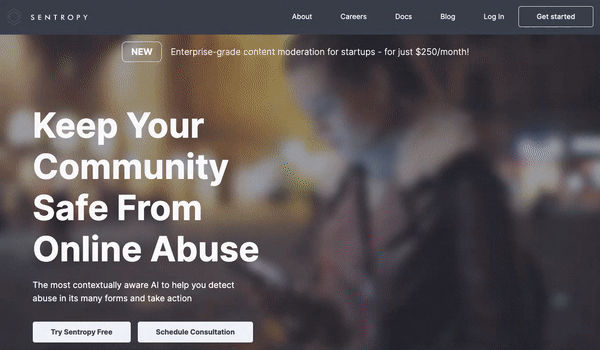
Because Sentropy’s technology relies on machine learning, their team has a high ratio of engineers: over 70% of the company is in a technical role.
One of those engineers is Li Yu. He joined Sentropy because he believes in their mission to keep online users safe from abuse and toxic behavior. His role is on the platform team, building architecture for consuming data and making sure Sentropy’s API is up to date and equipped to scale.
Laura Gentile works on the business side of things, running partnerships and strategy. In her role, she connects with channel partners and tech coalitions working to make the internet a safer place to educate people on what Sentropy does and get them access to the abuse-preventing technology.
As a small team tackling a complex issue, Sentropy needs to move fast and help every teammate operate at their best. Here's a look at how Li built internal tools that helped Laura focus on growth.
When Li joined Sentropy, he quickly noticed points of friction between engineering and business operations that could be optimized.
Our business teams often tackle processes that require technical skills to complete, and that meant relying on engineering to get work done.
Li started by building a few home-grown solutions to help with this, but they proved to be too complicated to use and difficult to train people on.
After shipping several tools for the operations and customer support teams, he still had no idea if they were making a difference—or even being used.
“I felt like I was solving the technical problem but not actually solving the user problem because nobody was using the solutions for fear of breaking something in the code,” he says. And because he spent over a month developing them, it felt like he wasted time.
As a backend engineer, Li wasn't as familiar building user interfaces, but he still wanted to make something easy for people to use without spending a lot of time on it.
Plus, he needed a way to build a solution without taking time away from engineers working on customer-serving features.
Our engineers would have to take breaks from critical work to serve the business team’s needs. But these were repetitive, somewhat simple processes that the business team simply couldn’t run because we couldn't bridge the technical gaps.
Not only was this process taking away from engineering focus time, but the business team would have to wait on the engineering team before they could get back to customers, too. It was creating friction on both sides and slowing down results for their customers.
When he began to consider solutions, Li remembered Retool—he’d used it at his former company, so he decided to try it at Sentropy.
“Using Retool allows me to connect a friendly UI to the necessary data so that people only have to press a few buttons to complete the functions they need—it helps with adoption and, more importantly, people continue to use it,” he says.
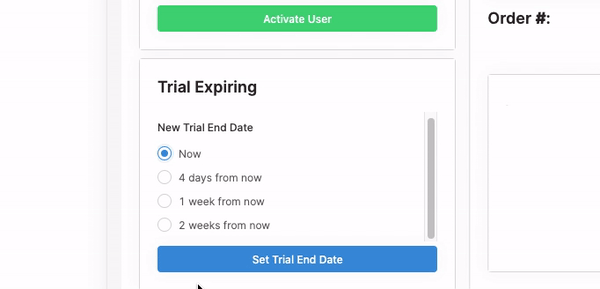
It also keeps sensitive data or processes out of danger of being broken or impacted by team members who don’t have the technical know-how to manage them.
What’s more, there’s a silver lining for Li:
Not having to worry about making frontend decisions—because Retool does that for me—removes so much of the mental load of building these tools as a backend engineer.
Laura and other teammates needed a new way to add, edit, and delete customers and their settings. Still, without a tool to do so, they had to rely on engineering resources to manage information on the backend.
“Before Retool, adding, removing, or updating customers was an involved process that used multiple endpoints to edit values,” explains Li.
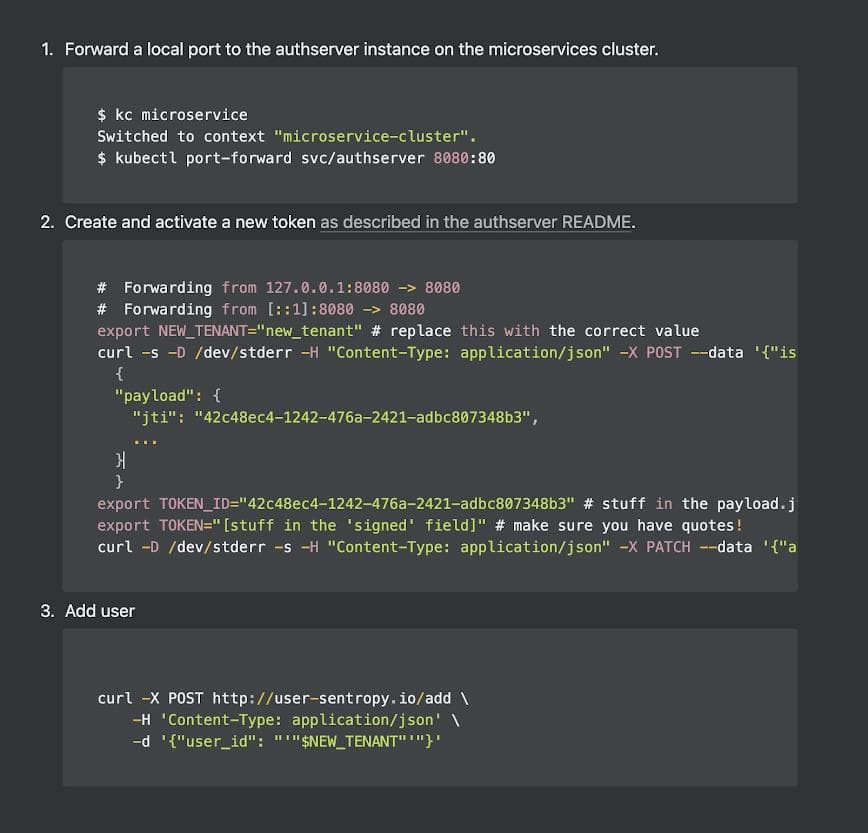
“We had to connect to a VPN, find the right token and endpoint, and consult several sets of docs to figure out settings—it just wasn’t straightforward to do.”
And though Li built an internal solution, it still wasn’t being used. “The harder something is to learn, the more resistant people are to use it,” Li says. “I needed to go one step further, and Retool was the key to doing that.”
For Laura, the process was frustrating because every time she wanted to add or update a customer’s information, she had to submit a ticket to engineering—and then wait.
Each request involved a JIRA ticket, and, inevitably, information would get lost at some point. What’s more, the back and forth of the process was tedious for everyone involved. “It was just a messy juncture between our two teams that took a long time,” Laura explains.
Now, a process that used to take over a week takes as little as five minutes to complete using Retool.
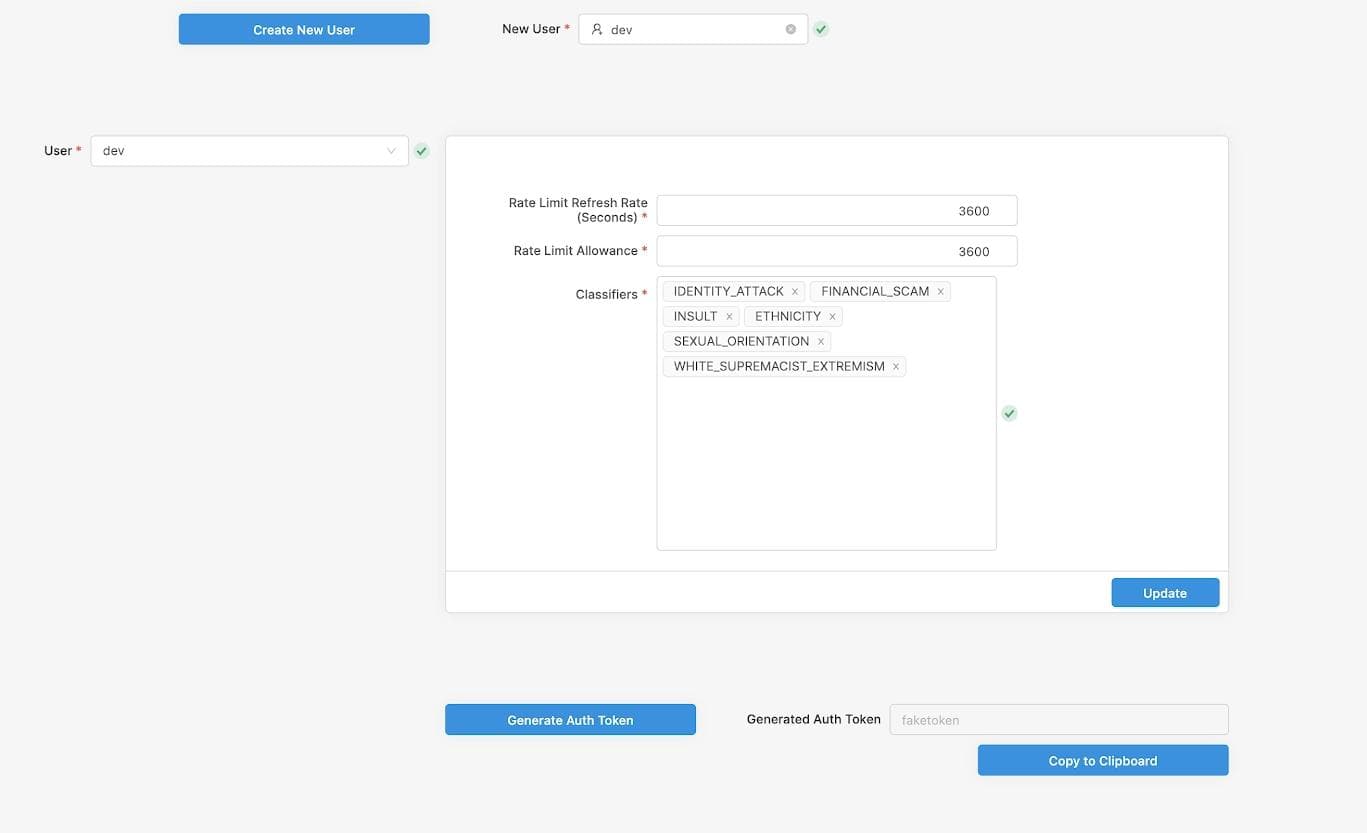
Endpoints are pre-configured, so nobody needs to worry about a multi-step complicated process. Business team members can run all of their commands and customization without needing to involve engineering.
“Overall, using Retool to add, update, and remove customers helps us get back to customers faster and collapses our sales cycle significantly,” Laura says. “Engineers aren’t chasing information from us and we aren’t reliant on anyone to serve customers.”
Using Retool to manage customer-facing teams’ workflows provides visibility into customer data and empowers non-technical team members to make updates without code.
“Retool works for us because of its ease of use—it’s intuitive for our business team to use,” Laura explains. Plus, the entire workflow only took 2 hours to set up in Retool—something that previously took Li over a month to build (and then wasn’t used).
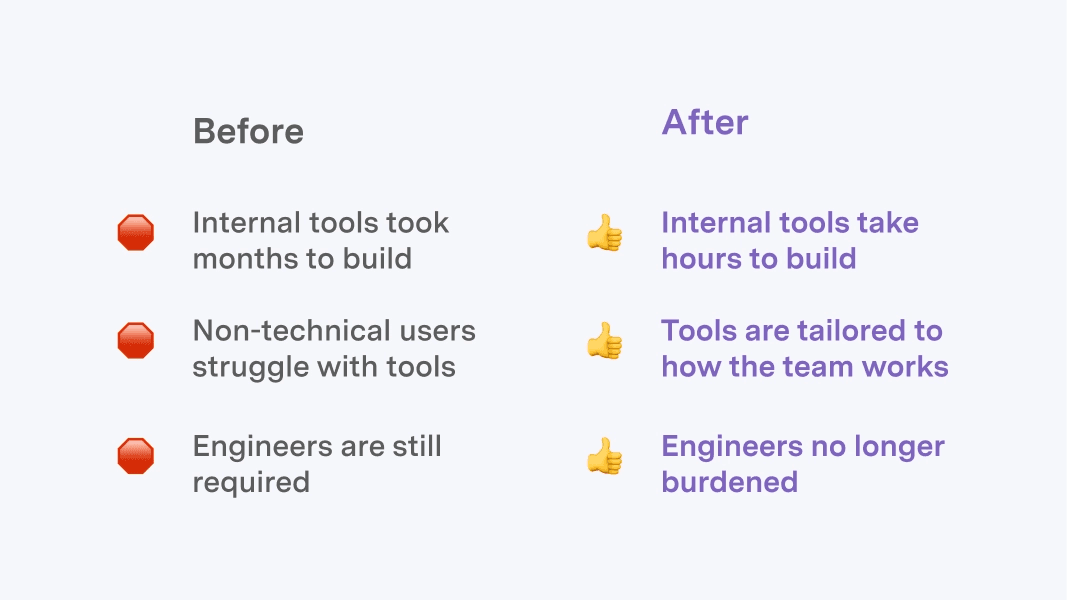
The time saved—both developing solutions and responding to ongoing requests—means more resources for engineers to spend detecting abuse online and building the features that move the needle on achieving Sentropy’s mission.
Before Retool, onboarding a new or prospective customer could take an engineer up to 30 minutes.
Now, engineers don’t have to do anything—the business team takes care of it themselves without involving engineers, freeing up time to work directly on the machine learning and models that detect online abuse and helps Sentropy get closer to its mission.
Using Retool to manage customer workflow also reduces the risk of human error, improving customer service, data accuracy, and team confidence.
Anytime I’m working in someone else's code, I’m worried about making changes that will mess it up,” Laura explains. “Retool turns that worry into a simple text box and takes away the fear of breaking something, improving my ability to serve our partners and customers.”
Finally, Retool collapses Sentropy’s sales cycle and empowers business teams to provide a better customer experience. “It used to be a black hole—we’d tell customers to give us a week to get back to them before they could even try our tool, and sometimes we didn’t know how long it would take us,” Laura explains.
“Customers would often wonder what was going on and whether our technology was actually that easy to use,” she adds.
Now, Laura and her team are more polished and capable on sales calls, connect with customers more quickly, and can get them up and running on Sentropy faster. “Just the idea that we can get back to customers sooner improves the confidence of our business team,” Laura says.
For Laura, Retool takes a layer of stress off her day-to-day by empowering her to get back to customers faster. "Before, it was frustrating to have an extra week or more in my sales period where I couldn't service partners or customers," she says.
With Retool, they've been able to focus on speed at every turn. Li adds,“to scale and grow at the rate we want, we need the customer experience to be seamless—after all, we have amazing technology and want our operational experience for customers to match it."
Using Retool enables our customer-facing teams to deliver best-in-class service and our engineers to focus on building our product.
Reader



